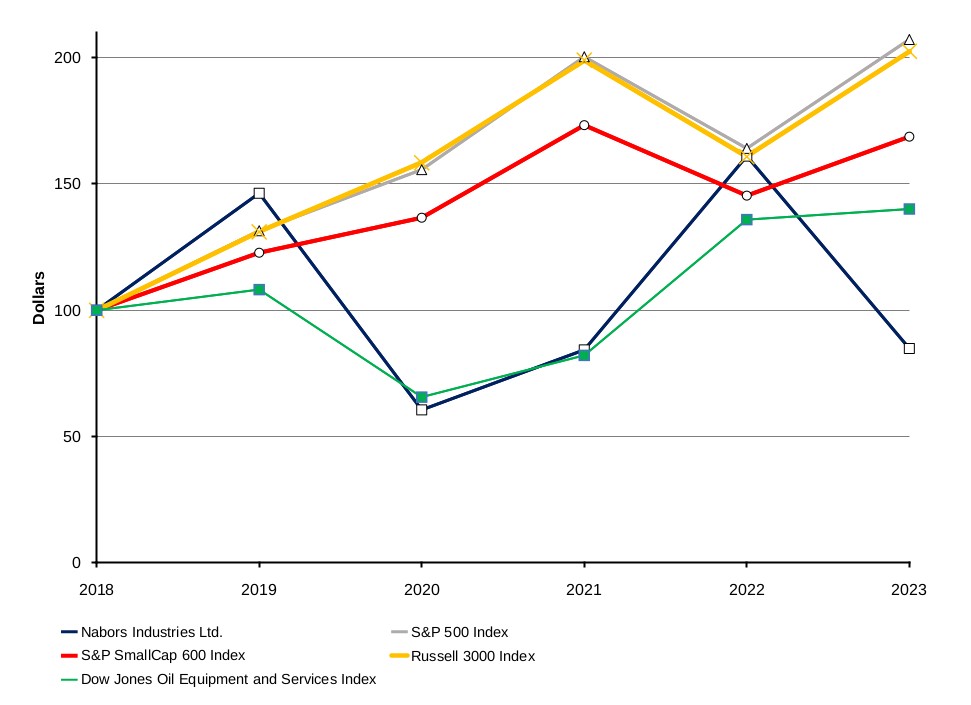Our aspirations, goals and initiatives related to sustainability and emissions reduction, and our public statements and disclosures regarding them, expose us to risks.
We have developed, and will continue to develop and set, goals, targets, or other objectives related to sustainability matters. Statements related to these goals, targets and objectives reflect our current plans and do not constitute a guarantee that they will be achieved. Our efforts to research, establish, accomplish, and accurately report on these goals, targets, and objectives expose us to numerous operational, reputational, financial, legal, and other risks. Our ability to achieve any stated goal, target, or objective, including with respect to emissions reduction, is subject to numerous factors and conditions, some of which are outside of our control. Some factors include, but are not limited to, (i) the extent to which our customers’ decisions directly impact, relate to, or influence the use of our equipment that creates the emissions we report, (ii) the availability and cost of low- or non-carbon-based energy sources and technologies, (iii) evolving regulatory requirements affecting sustainability standards or disclosures, and (iv) the availability of suppliers that can meet our sustainability and other standards. In addition, standards for tracking and reporting on sustainability matters, including climate-related matters, have not been harmonized and continue to evolve. Our processes and controls for reporting sustainability matters may not always comply with evolving and disparate standards for identifying, measuring, and reporting such metrics and such standards may change over time, which could result in significant revisions to our current goals, reported progress in achieving such goals, or ability to achieve such goals in the future. Our business may also face increased scrutiny from investors and other stakeholders related to our sustainability activities, including the goals, targets, and objectives that we announce, and our methodologies and timelines for pursuing them. If our sustainability practices do not meet investor or other stakeholder expectations and standards, which continue to evolve, our reputation, our ability to attract or retain employees, and our attractiveness as an investment or business partner could be negatively affected. Similarly, our failure or perceived failure to pursue or fulfill our sustainability-focused goals, targets, and objectives, to comply with ethical, environmental, or other standards, regulations, or expectations, or to satisfy various reporting standards with respect to these matters, within the timelines we announce, or at all, could adversely affect our business or reputation, as well as expose us to government enforcement actions and private litigation.
We will be subject to a number of uncertainties during the timeframe when Nabors Energy Transition Corporation II (“NETC II”) pursues a business combination, which could adversely affect our business, financial condition, results of operations, cash flows and share price.
If NETC II is unable to consummate a suitable business transaction during the prescribed time period set forth in the terms of the initial public offering, we may experience negative reactions from the financial markets and from our shareholders. In addition, in the event that NETC II is able to find a suitable business combination, or if the business combination is unsuccessful, there is no assurance that we will realize the anticipated value from such transaction.
Financial Risks
We may record additional losses or impairment charges related to sold or idle drilling rigs and other assets.
In 2021, we recognized impairment charges of $60.5 million related to tangible assets and equipment. Prolonged periods of low utilization or low dayrates, the cold stacking of idle assets, the sale of assets below their then-carrying value or the decline in market value of our assets may cause us to experience further losses. If future cash flow estimates, based upon information available to management at the time, including oil and gas prices and expected utilization levels, indicate that the carrying value of any of our rigs may not be recoverable or if we sell assets for less than their then carrying value, we may recognize additional impairment charges on our fleet, which could adversely affect our business, financial condition, results of operations and cash flows.
Our financial and operating flexibility could be affected by our long-term debt and other financial commitments.
The 2022 Credit Agreement (as defined) is secured with a first lien security interest on all land drilling rigs and related equipment, spare parts and inventory in the contiguous United States. As of December 31, 2023, we had no borrowings under this facility. Under the facility, we are required to maintain an “interest coverage ratio” of no less than 2.50:1.00 as of the last day of the fiscal quarter ending December 31, 2023, with such ratio periodically increasing in increments of 0.125:1.00 to a minimum interest coverage ratio of 2.75:1.00 as of the fiscal quarter ending June 30, 2024. We are also required to maintain a “minimum guarantor value” of no less than 90% at all times. The interest coverage
